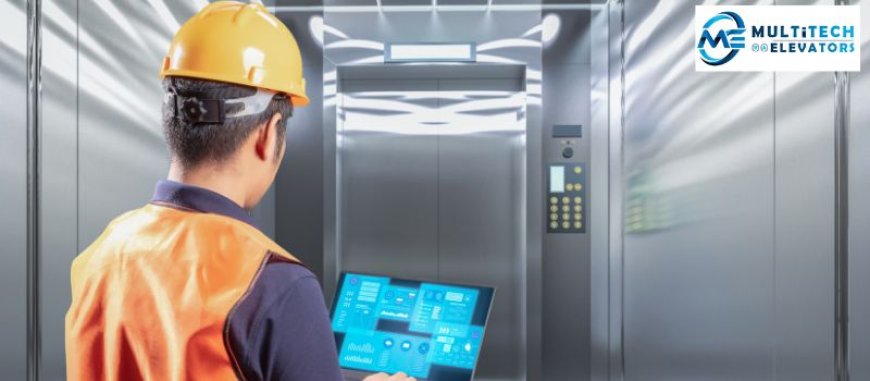Renewing a lift maintenance contract is a critical task that ensures the safety, reliability, and longevity of your lift system. Proper maintenance can prevent costly repairs and downtime, ensuring smooth operation. Here's a comprehensive guide on what you need to consider before renewing your lift maintenance contract.
1. Review the Current Contract
Before renewing, thoroughly review your existing maintenance contract. Understand the terms, conditions, and scope of services provided. Check for any clauses related to price increases, service limitations, or exclusions. Identify any areas where the service provider may not have met your expectations.
2. Evaluate Service Provider Performance
Assess the performance of your current service provider. Consider factors such as:
- Response Time: How quickly do they respond to service calls?
- Quality of Service: Are the repairs and maintenance work up to standard?
- Professionalism: Are the technicians knowledgeable and courteous?
- Communication: Is the service provider easy to communicate with regarding issues and scheduling?
3. Understand Your Lift's Maintenance Needs
Different types of lifts require different maintenance approaches. Ensure you understand the specific needs of your lift system, whether it's a passenger lift, freight lift, or residential elevator. Check the manufacturer's recommendations for maintenance intervals and necessary services.
4. Compare Service Packages
Not all maintenance contracts are created equal. Compare the service packages offered by different providers. Look for:
- Routine Inspections: How often are routine inspections conducted?
- Emergency Repairs: Are emergency repair services included? What are the response times?
- Parts Replacement: Are parts and labor included in the contract?
- Preventive Maintenance: Does the contract cover preventive maintenance to avoid major issues?
5. Check Certification and Experience
Ensure the service provider is certified and experienced in maintaining your specific type of lift. Technicians should be trained and certified to handle the complexities of modern lift systems. Check for industry certifications such as those from the National Association of Elevator Contractors (NAEC) or similar organizations.
6. Review Customer References and Reviews
Ask the service provider for customer references and read online reviews. Feedback from other customers can provide valuable insights into the reliability and quality of the service provider. Look for consistent positive feedback and any recurring issues mentioned by customers.
7. Understand the Costs
Analyze the costs involved in the maintenance contract. Consider:
- Base Fee: The regular maintenance fee.
- Additional Charges: Any extra charges for emergency services, parts, or labor not covered in the contract.
- Annual Increases: Are there clauses for annual price increases?
Ensure the pricing structure is transparent and that you understand all potential costs.
8. Evaluate Contract Flexibility
Check the flexibility of the contract terms. Can you adjust the scope of services if your needs change? Is there a provision for terminating the contract if the service provider fails to meet expectations? Flexible contract terms can provide peace of mind and adaptability.
9. Check Compliance with Regulations
Ensure the maintenance provider complies with all local and national regulations regarding lift safety and maintenance. This includes adherence to safety standards and regular inspections mandated by authorities. Non-compliance can lead to legal issues and safety hazards.
10. Consider Technological Advancements
Modern lifts are equipped with advanced technologies such as IoT sensors and predictive maintenance tools. Ensure your service provider is equipped to handle these technologies and can leverage them to improve maintenance efficiency and reduce downtime.
11. Discuss Service Level Agreements (SLAs)
A Service Level Agreement (SLA) outlines the expected performance and service quality. Ensure the contract includes clear SLAs for response times, repair completion times, and regular maintenance schedules. SLAs provide a benchmark for evaluating the service provider’s performance.
12. Ensure Emergency Support Availability
Lifts can break down unexpectedly, and timely repairs are crucial. Confirm that the service provider offers 24/7 emergency support. Understand their process for handling emergency calls and the average response time to ensure minimal disruption.
13. Check for Insurance and Liability Coverage
Verify that the service provider has adequate insurance coverage. This should include liability insurance to cover any damages or accidents that occur during maintenance. Ensure the contract specifies the extent of the provider’s liability in case of any issues.
14. Negotiate Terms
Don’t hesitate to negotiate the terms of the contract. You may be able to secure better pricing, additional services, or more favorable terms. Negotiating can lead to a contract that better suits your needs and budget.
15. Document Everything
Ensure all agreements, changes, and specific terms are documented in the contract. Verbal agreements should be avoided as they can lead to misunderstandings. A well-documented contract protects both parties and provides clear guidelines for service delivery.
Conclusion
Renewing your lift maintenance contract is a significant decision that impacts the safety and functionality of your lift system. By carefully reviewing the current contract, evaluating the service provider’s performance, understanding your lift’s maintenance needs, and considering the factors outlined above, you can make an informed decision that ensures optimal maintenance and long-term reliability of your lift system.















